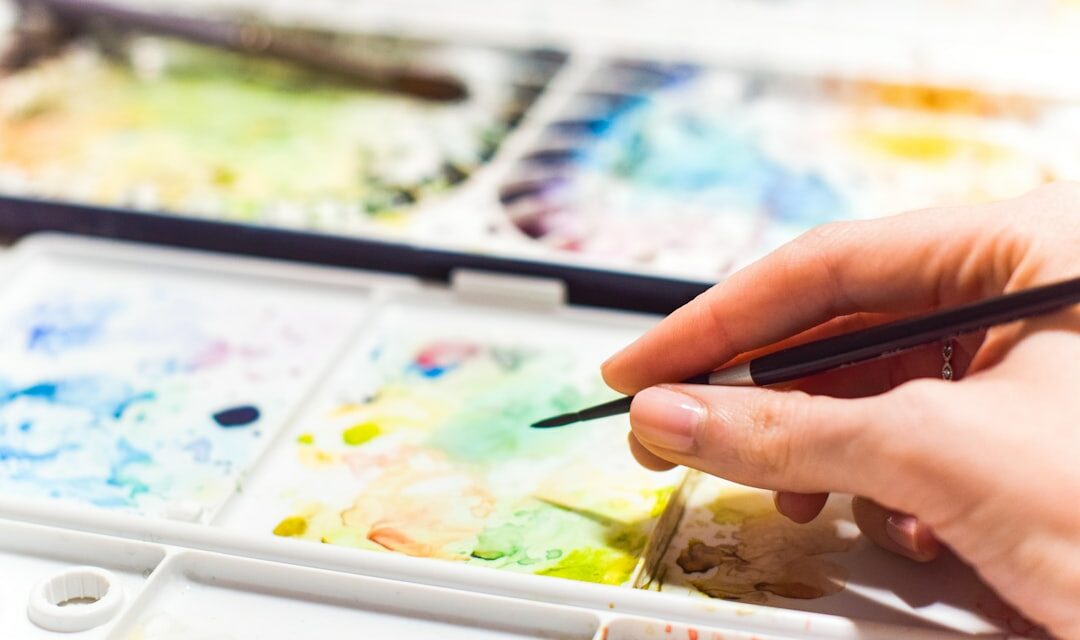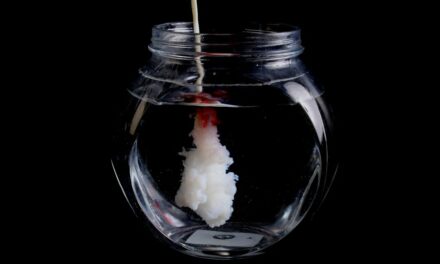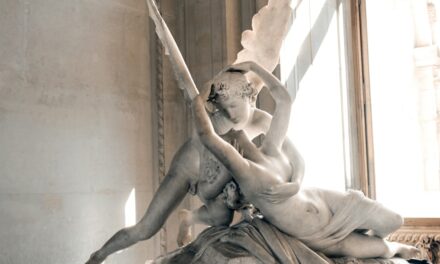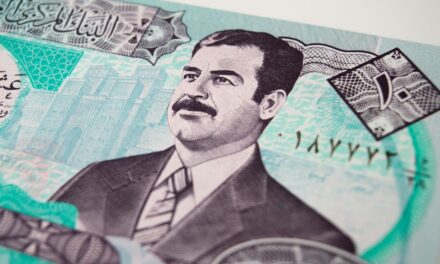Acrylic painting, as we know it today, has a relatively short yet fascinating history that traces back to the mid-20th century. The origins of acrylic paint can be linked to the development of synthetic polymers in the 1930s, which were initially used for industrial applications. However, it was not until the 1950s that artists began to embrace these new materials for creative expression.
The first commercially available acrylic paints were introduced by the paint manufacturer Liquitex in 1955, providing artists with a versatile medium that dried quickly and could be thinned with water. This innovation marked a significant shift in the art world, as acrylics offered a unique combination of properties that allowed for both traditional and experimental techniques. As the popularity of acrylic painting grew, it became a favourite among various art movements, including Abstract Expressionism and Pop Art.
Artists such as David Hockney and Andy Warhol utilised acrylics to create vibrant, bold works that captured the essence of contemporary culture. The medium’s adaptability allowed for a wide range of styles, from thick impasto applications to delicate washes. Over the decades, acrylic painting has continued to evolve, with advancements in formulations leading to improved lightfastness and texture options.
Today, acrylics are celebrated not only for their versatility but also for their accessibility, making them a popular choice for both amateur and professional artists alike.
Summary
- Acrylic painting originated in the 1940s and gained popularity due to its fast drying time and versatility.
- Materials and tools for acrylic painting include acrylic paints, brushes, canvas or paper, palette, and water or acrylic mediums.
- Basic techniques for acrylic painting include layering, blending, dry brushing, and using different brush strokes.
- Colour mixing and blending in acrylic painting can be achieved by using a limited palette and experimenting with different ratios and techniques.
- Acrylic painting styles and approaches vary from abstract and impressionistic to hyperrealistic and mixed media.
Materials and Tools for Acrylic Painting
Choosing the Right Paint
The primary component is, of course, the acrylic paint itself, which comes in various forms such as heavy body, soft body, and fluid acrylics. Heavy body acrylics are thick and ideal for impasto techniques, whilst fluid acrylics are more akin to watercolour in consistency, allowing for smooth washes and fine detail work.
Selecting Brushes and Tools
Additionally, artists can choose from a wide array of colours, often sold in sets or individually, enabling them to create an extensive palette tailored to their artistic vision. In addition to paint, the right brushes are crucial for achieving desired effects. Acrylic brushes are typically made with synthetic bristles that can withstand the harshness of acrylic paint and are available in various shapes and sizes, including flat, round, and filbert.
Setting Up Your Workspace
Other essential tools include palettes for mixing colours, water containers for rinsing brushes, and canvas or acrylic paper as surfaces for painting. Some artists may also opt for palette knives to create texture or apply paint in a more controlled manner. With these materials at hand, artists can explore the limitless possibilities that acrylic painting offers.
Basic Techniques for Acrylic Painting

Acrylic painting encompasses a variety of techniques that can be employed to achieve different effects and styles. One fundamental technique is layering, which involves applying multiple transparent or semi-transparent layers of paint to build depth and complexity in a piece. This method allows artists to create luminous effects by allowing underlying colours to show through.
Another essential technique is glazing, where a thin layer of transparent paint is applied over a dried layer to modify its colour or tone without obscuring the details beneath. This technique is particularly effective for creating subtle shifts in hue and enhancing the overall richness of a painting. Another important technique is wet-on-wet painting, where fresh paint is applied onto wet paint on the canvas.
This approach allows for seamless blending and soft transitions between colours, making it ideal for creating atmospheric effects or soft edges. Conversely, dry brushing is a technique that involves using a dry brush with minimal paint to create texture and highlight details. This method can produce a range of effects from soft textures to sharp lines, depending on the pressure applied and the type of brush used.
By mastering these basic techniques, artists can develop their unique style and express their creativity through acrylic painting.
Colour Mixing and Blending in Acrylic Painting
Understanding colour mixing and blending is essential for any artist working with acrylics, as it allows for greater control over the palette and enhances the overall composition of a piece. Acrylic paints can be mixed directly on the palette or on the canvas itself, providing artists with flexibility in achieving their desired shades. The primary colours—red, blue, and yellow—serve as the foundation for creating an extensive range of hues through mixing.
By combining these colours in various proportions, artists can produce secondary colours such as green, orange, and purple, as well as countless tertiary shades. Blending is another critical aspect of working with colour in acrylic painting. Due to the fast-drying nature of acrylics, artists must work quickly when blending colours on the canvas to achieve smooth transitions.
One effective method is to use a wet brush to blend two adjacent colours while they are still wet, creating a seamless gradient effect. Alternatively, artists can employ glazing techniques to build up layers of colour gradually, allowing each layer to dry before applying the next. This approach not only enhances depth but also enables artists to create intricate colour relationships that add vibrancy and life to their work.
Acrylic Painting Styles and Approaches
Acrylic painting is characterised by its versatility, allowing artists to explore a myriad of styles and approaches that reflect their individual preferences and artistic goals. One prominent style is abstract painting, where artists use colour, form, and texture to convey emotions or concepts without representing specific objects or scenes. This approach often involves bold brushwork and dynamic compositions that invite viewers to interpret the artwork subjectively.
Many abstract artists utilise acrylics due to their quick drying time and ability to layer colours effectively. On the other end of the spectrum lies realism, where artists strive to depict subjects as accurately as possible. Acrylics lend themselves well to this style due to their capacity for fine detail and vibrant colour reproduction.
Realist painters often employ techniques such as glazing and layering to achieve lifelike textures and depth in their work. Additionally, mixed media approaches have gained popularity among contemporary artists who combine acrylics with other materials such as collage elements or found objects. This fusion of techniques allows for innovative expressions that challenge traditional boundaries within the medium.
Tips for Beginners in Acrylic Painting

Developing Your Colour Palette
It is also advisable to start with a limited palette of primary colours plus black and white; this will help develop an understanding of colour mixing without becoming overwhelmed by choices.
Understanding Acrylic Paints’ Drying Time
Another important aspect is understanding the drying time of acrylic paints. Unlike oils that remain workable for extended periods, acrylics dry quickly—sometimes within minutes—so it’s crucial to plan accordingly. Using a palette with a lid or a stay-wet palette can help keep paints moist longer during sessions.
Investing in Quality Tools
Additionally, investing in quality brushes and surfaces will significantly enhance the painting experience; while it may be tempting to opt for cheaper options as a beginner, quality tools can make a noticeable difference in achieving desired results.
Common Mistakes to Avoid in Acrylic Painting
As with any artistic endeavour, beginners often encounter common pitfalls when starting with acrylic painting. One frequent mistake is overworking the paint; due to its fast-drying nature, excessive manipulation can lead to muddy colours and loss of detail. It’s essential for artists to know when to step back and allow layers to dry before adding more paint or making adjustments.
Additionally, neglecting proper brush care can lead to frustration; cleaning brushes thoroughly after each session prevents paint from drying in the bristles and ensures longevity. Another common error is not understanding the importance of priming surfaces before painting. Many beginners may assume that any surface will suffice; however, using unprimed canvas or paper can result in uneven absorption of paint and undesirable textures.
Priming surfaces with gesso creates an ideal foundation that enhances adhesion and allows for smoother application of paint. By being mindful of these common mistakes, beginners can cultivate better practices that will ultimately lead to more satisfying results in their acrylic painting journey.
Exploring Advanced Techniques in Acrylic Painting
Once artists have mastered the basics of acrylic painting, they may wish to delve into advanced techniques that can elevate their work further. One such technique is pouring acrylics—a method that involves mixing paint with a pouring medium and allowing it to flow across the canvas. This approach creates stunning abstract patterns and textures that are often unpredictable yet visually captivating.
Artists can experiment with different pouring mediums and additives like silicone oil to achieve unique effects such as cells or marbling. Another advanced technique worth exploring is using acrylic mediums to alter the properties of paint itself. There are various mediums available that can change texture, transparency, or drying time; for instance, adding gel medium can create a thick texture suitable for impasto work while incorporating retarders slows down drying time for better blending opportunities.
Additionally, incorporating mixed media elements such as collage or incorporating found objects into paintings can add depth and dimension that enriches the overall composition. By embracing these advanced techniques, artists can push their creative boundaries and discover new avenues for expression within the realm of acrylic painting.
For those intrigued by the versatility and vibrant colours of acrylic painting, exploring different art movements can provide further inspiration and depth. A particularly interesting movement is Futurism, which emphasises speed, technology, youth, and objects such as the car, the airplane, and the industrial city. To gain a deeper understanding of how these themes contrast with the techniques and expressions found in acrylic painting, you might find it beneficial to read An Introduction to Futurism. This article explores the dynamic and energetic qualities of Futurism, offering a fascinating perspective on how art continuously evolves with cultural and technological advancements.




